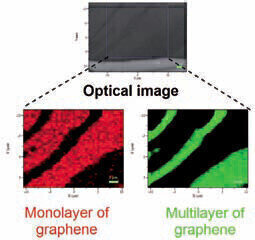Chromatography
Raman Spectroscopy New Wonder Material
Oct 10 2011
The Nobel Prize in Physics 2010 was awarded to Professors Andrew Geim and Konstantin Novoselov for their isolation and characterisation of the novel advanced material graphene. First report in Science in 2004, graphene consists of a single-atom-thick sheet of carbon atoms arrayed in a honeycomb pattern.
It is the thinnest, yet strongest, material known, being both brittle and ductile simultaneously. Thus, it exhibits excellent transport properties which make it a promising material for future nanoelectronic devices, namely for high-electronmobility transistors (HEMT).
Due to its scale and optical properties, graphene is hardly visible on most substrates. However, distinguishing the number of graphene layers as well as quantifying the impact of disorder on its properties is critical for the study of graphene-based devices.
Raman micro spectroscopy has proven to be very sensitive for determining both of these properties. Indeed, with its high structural selectivity, combined with both spectral and spatial resolution, this technique can detect edges or defects at the micron scale. The strong Raman efficiency of the graphene enables to cover large surfaces in record time and thus localise mono-, bi- or multi-layers very rapidly. The non-destructive nature of this technique is also a considerable advantage to protect the quality characteristics of this wonder material.
Digital Edition
Lab Asia 31.2 April 2024
April 2024
In This Edition Chromatography Articles - Approaches to troubleshooting an SPE method for the analysis of oligonucleotides (pt i) - High-precision liquid flow processes demand full fluidic c...
View all digital editions
Events
May 21 2024 Lagos, Nigeria
May 22 2024 Basel, Switzerland
Scientific Laboratory Show & Conference 2024
May 22 2024 Nottingham, UK
May 23 2024 Beijing, China
May 28 2024 Tel Aviv, Israel













.jpg)




